SEO
11 SEO Tips & Tricks To Improve Search Indexation

The SEO game has so many moving parts that it often seems like, as soon as we’re done optimizing one part of a website, we have to move back to the part we were just working on.
Once you’re out of the “I’m new here” stage and feel that you have some real SEO experience under your belt, you might start to feel that there are some things you can devote less time to correcting.
Indexability and crawl budgets could be two of those things, but forgetting about them would be a mistake.
I always like to say that a website with indexability issues is a site that’s in its own way; that website is inadvertently telling Google not to rank its pages because they don’t load correctly or they redirect too many times.
If you think you can’t or shouldn’t be devoting time to the decidedly not-so-glamorous task of fixing your site’s indexability, think again.
Indexability problems can cause your rankings to plummet and your site traffic to dry up quickly.
So, your crawl budget has to be top of mind.
In this post, I’ll present you with 11 tips to consider as you go about improving your website’s indexability.
1. Track Crawl Status With Google Search Console
Errors in your crawl status could be indicative of a deeper issue on your site.
Checking your crawl status every 30-60 days is important to identify potential errors that are impacting your site’s overall marketing performance.
It’s literally the first step of SEO; without it, all other efforts are null.
Right there on the sidebar, you’ll be able to check your crawl status under the index tab.
 Screenshot by author, May 2022
Screenshot by author, May 2022Now, if you want to remove access to a certain webpage, you can tell Search Console directly. This is useful if a page is temporarily redirected or has a 404 error.
A 410 parameter will permanently remove a page from the index, so beware of using the nuclear option.
Common Crawl Errors & Solutions
If your website is unfortunate enough to be experiencing a crawl error, it may require an easy solution or be indicative of a much larger technical problem on your site.
The most common crawl errors I see are:
 Screenshot by author, May 2022
Screenshot by author, May 2022To diagnose some of these errors, you can leverage the URL Inspection tool to see how Google views your site.
Failure to properly fetch and render a page could be indicative of a deeper DNS error that will need to be resolved by your DNS provider.
 Screenshot by author, May 2022
Screenshot by author, May 2022Resolving a server error requires diagnosing a specific error. The most common errors include:
- Timeout.
- Connection refused.
- Connect failed.
- Connect timeout.
- No response.
Most of the time, a server error is usually temporary, although a persistent problem could require you to contact your hosting provider directly.
Robots.txt errors, on the other hand, could be more problematic for your site. If your robots.txt file is returning a 200 or 404 error, it means search engines are having difficulty retrieving this file.
You could submit a robots.txt sitemap or avoid the protocol altogether, opting to manually noindex pages that could be problematic for your crawl.
Resolving these errors quickly will ensure that all of your target pages are crawled and indexed the next time search engines crawl your site.
2. Create Mobile-Friendly Webpages
With the arrival of the mobile-first index, we must also optimize our pages to display mobile-friendly copies on the mobile index.
The good news is that a desktop copy will still be indexed and displayed under the mobile index if a mobile-friendly copy does not exist. The bad news is that your rankings may suffer as a result.
There are many technical tweaks that can instantly make your website more mobile-friendly including:
- Implementing responsive web design.
- Inserting the viewpoint meta tag in content.
- Minifying on-page resources (CSS and JS).
- Tagging pages with the AMP cache.
- Optimizing and compressing images for faster load times.
- Reducing the size of on-page UI elements.
Be sure to test your website on a mobile platform and run it through Google PageSpeed Insights. Page speed is an important ranking factor and can affect the speed at which search engines can crawl your site.
3. Update Content Regularly
Search engines will crawl your site more regularly if you produce new content on a regular basis.
This is especially useful for publishers who need new stories published and indexed on a regular basis.
Producing content on a regular basis signal to search engines that your site is constantly improving and publishing new content, and therefore needs to be crawled more often to reach its intended audience.
4. Submit A Sitemap To Each Search Engine
One of the best tips for indexation to this day remains to submit a sitemap to Google Search Console and Bing Webmaster Tools.
You can create an XML version using a sitemap generator or manually create one in Google Search Console by tagging the canonical version of each page that contains duplicate content.
5. Optimize Your Interlinking Scheme
Establishing a consistent information architecture is crucial to ensuring that your website is not only properly indexed, but also properly organized.
Creating main service categories where related webpages can sit can further help search engines properly index webpage content under certain categories when the intent may not be clear.
 Screenshot by author, May 2022
Screenshot by author, May 20226. Deep Link To Isolated Webpages
If a webpage on your site or a subdomain is created in isolation or an error preventing it from being crawled, you can get it indexed by acquiring a link on an external domain.
This is an especially useful strategy for promoting new pieces of content on your website and getting it indexed quicker.
Beware of syndicating content to accomplish this as search engines may ignore syndicated pages, and it could create duplicate errors if not properly canonicalized.
7. Minify On-Page Resources & Increase Load Times
Forcing search engines to crawl large and unoptimized images will eat up your crawl budget and prevent your site from being indexed as often.
Search engines also have difficulty crawling certain backend elements of your website. For example, Google has historically struggled to crawl JavaScript.
Even certain resources like Flash and CSS can perform poorly over mobile devices and eat up your crawl budget.
In a sense, it’s a lose-lose scenario where page speed and crawl budget are sacrificed for obtrusive on-page elements.
Be sure to optimize your webpage for speed, especially over mobile, by minifying on-page resources, such as CSS. You can also enable caching and compression to help spiders crawl your site faster.
 Screenshot by author, May 2022
Screenshot by author, May 20228. Fix Pages With Noindex Tags
Over the course of your website’s development, it may make sense to implement a noindex tag on pages that may be duplicated or only meant for users who take a certain action.
Regardless, you can identify webpages with noindex tags that are preventing them from being crawled by using a free online tool like Screaming Frog.
The Yoast plugin for WordPress allows you to easily switch a page from index to noindex. You could also do this manually in the backend of pages on your site.
9. Set A Custom Crawl Rate
In the old version of Google Search Console, you can actually slow or customize the speed of your crawl rates if Google’s spiders are negatively impacting your site.
This also gives your website time to make necessary changes if it is going through a significant redesign or migration.
 Screenshot by author, May 2022
Screenshot by author, May 202210. Eliminate Duplicate Content
Having massive amounts of duplicate content can significantly slow down your crawl rate and eat up your crawl budget.
You can eliminate these problems by either blocking these pages from being indexed or placing a canonical tag on the page you wish to be indexed.
Along the same lines, it pays to optimize the meta tags of each individual page to prevent search engines from mistaking similar pages as duplicate content in their crawl.
11. Block Pages You Don’t Want Spiders To Crawl
There may be instances where you want to prevent search engines from crawling a specific page. You can accomplish this by the following methods:
- Placing a noindex tag.
- Placing the URL in a robots.txt file.
- Deleting the page altogether.
This can also help your crawls run more efficiently, instead of forcing search engines to pour through duplicate content.
Conclusion
The state of your website’s crawlability problems will more or less depend on how much you’ve been staying current with your own SEO.
If you’re tinkering in the back end all the time, you may have identified these issues before they got out of hand and started affecting your rankings.
If you’re not sure, though, run a quick scan in Google Search Console to see how you’re doing.
The results can really be educational!
More Resources:
Featured Image: Ernie Janes/Shutterstock
SEO
Google Further Postpones Third-Party Cookie Deprecation In Chrome
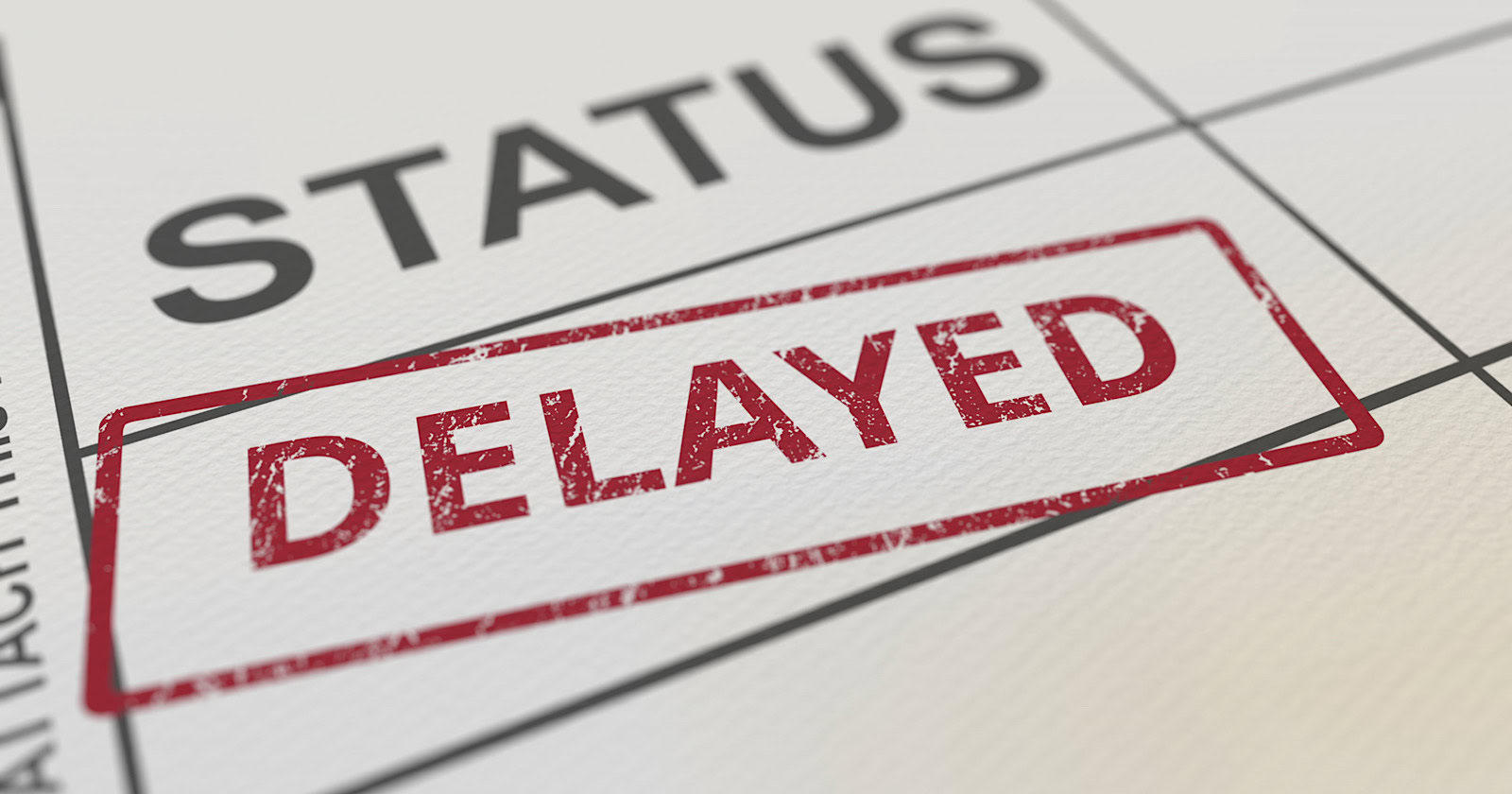
Google has again delayed its plan to phase out third-party cookies in the Chrome web browser. The latest postponement comes after ongoing challenges in reconciling feedback from industry stakeholders and regulators.
The announcement was made in Google and the UK’s Competition and Markets Authority (CMA) joint quarterly report on the Privacy Sandbox initiative, scheduled for release on April 26.
Chrome’s Third-Party Cookie Phaseout Pushed To 2025
Google states it “will not complete third-party cookie deprecation during the second half of Q4” this year as planned.
Instead, the tech giant aims to begin deprecating third-party cookies in Chrome “starting early next year,” assuming an agreement can be reached with the CMA and the UK’s Information Commissioner’s Office (ICO).
The statement reads:
“We recognize that there are ongoing challenges related to reconciling divergent feedback from the industry, regulators and developers, and will continue to engage closely with the entire ecosystem. It’s also critical that the CMA has sufficient time to review all evidence, including results from industry tests, which the CMA has asked market participants to provide by the end of June.”
Continued Engagement With Regulators
Google reiterated its commitment to “engaging closely with the CMA and ICO” throughout the process and hopes to conclude discussions this year.
This marks the third delay to Google’s plan to deprecate third-party cookies, initially aiming for a Q3 2023 phaseout before pushing it back to late 2024.
The postponements reflect the challenges in transitioning away from cross-site user tracking while balancing privacy and advertiser interests.
Transition Period & Impact
In January, Chrome began restricting third-party cookie access for 1% of users globally. This percentage was expected to gradually increase until 100% of users were covered by Q3 2024.
However, the latest delay gives websites and services more time to migrate away from third-party cookie dependencies through Google’s limited “deprecation trials” program.
The trials offer temporary cookie access extensions until December 27, 2024, for non-advertising use cases that can demonstrate direct user impact and functional breakage.
While easing the transition, the trials have strict eligibility rules. Advertising-related services are ineligible, and origins matching known ad-related domains are rejected.
Google states the program aims to address functional issues rather than relieve general data collection inconveniences.
Publisher & Advertiser Implications
The repeated delays highlight the potential disruption for digital publishers and advertisers relying on third-party cookie tracking.
Industry groups have raised concerns that restricting cross-site tracking could push websites toward more opaque privacy-invasive practices.
However, privacy advocates view the phaseout as crucial in preventing covert user profiling across the web.
With the latest postponement, all parties have more time to prepare for the eventual loss of third-party cookies and adopt Google’s proposed Privacy Sandbox APIs as replacements.
Featured Image: Novikov Aleksey/Shutterstock
SEO
How To Write ChatGPT Prompts To Get The Best Results
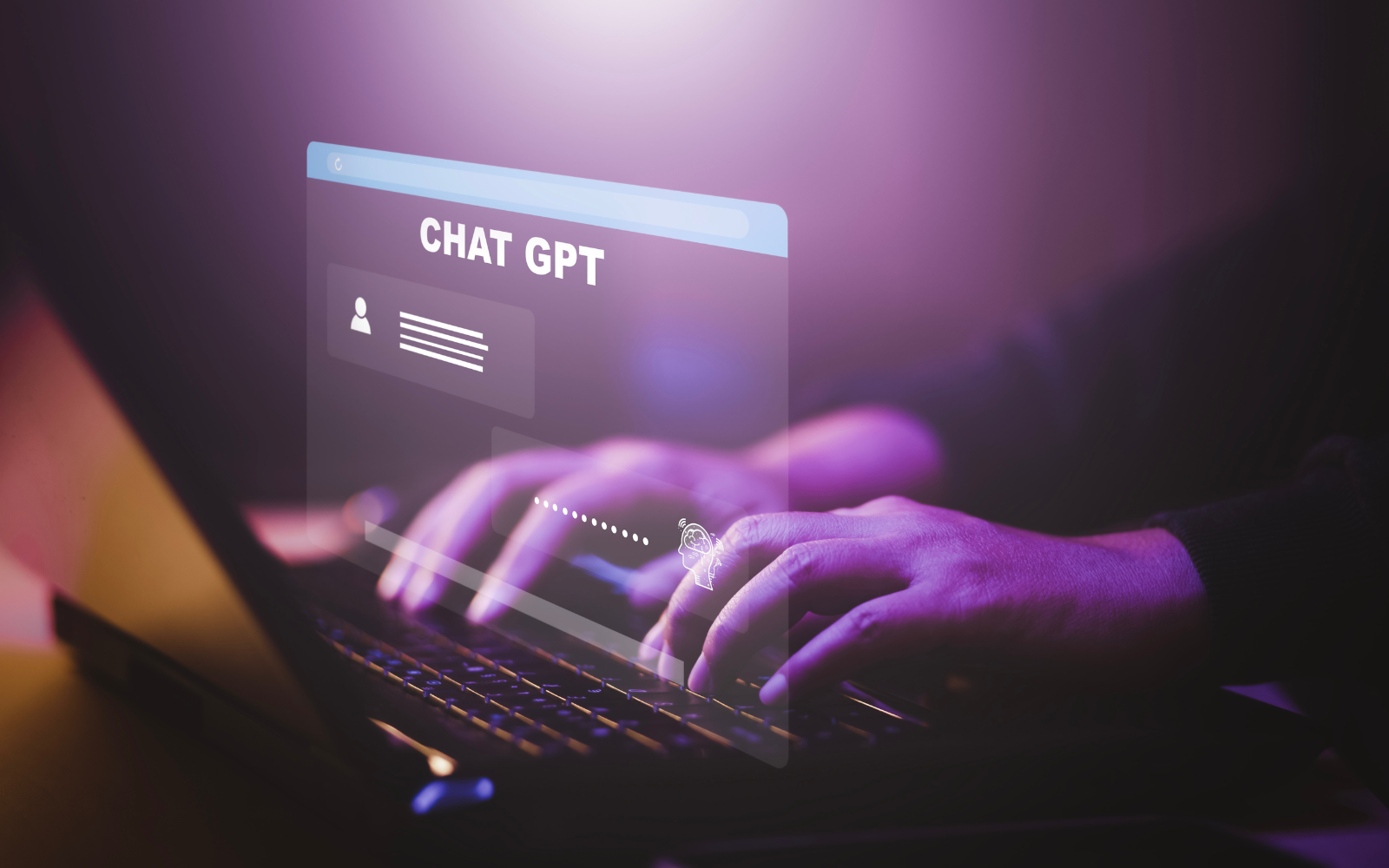
ChatGPT is a game changer in the field of SEO. This powerful language model can generate human-like content, making it an invaluable tool for SEO professionals.
However, the prompts you provide largely determine the quality of the output.
To unlock the full potential of ChatGPT and create content that resonates with your audience and search engines, writing effective prompts is crucial.
In this comprehensive guide, we’ll explore the art of writing prompts for ChatGPT, covering everything from basic techniques to advanced strategies for layering prompts and generating high-quality, SEO-friendly content.
Writing Prompts For ChatGPT
What Is A ChatGPT Prompt?
A ChatGPT prompt is an instruction or discussion topic a user provides for the ChatGPT AI model to respond to.
The prompt can be a question, statement, or any other stimulus to spark creativity, reflection, or engagement.
Users can use the prompt to generate ideas, share their thoughts, or start a conversation.
ChatGPT prompts are designed to be open-ended and can be customized based on the user’s preferences and interests.
How To Write Prompts For ChatGPT
Start by giving ChatGPT a writing prompt, such as, “Write a short story about a person who discovers they have a superpower.”
ChatGPT will then generate a response based on your prompt. Depending on the prompt’s complexity and the level of detail you requested, the answer may be a few sentences or several paragraphs long.
Use the ChatGPT-generated response as a starting point for your writing. You can take the ideas and concepts presented in the answer and expand upon them, adding your own unique spin to the story.
If you want to generate additional ideas, try asking ChatGPT follow-up questions related to your original prompt.
For example, you could ask, “What challenges might the person face in exploring their newfound superpower?” Or, “How might the person’s relationships with others be affected by their superpower?”
Remember that ChatGPT’s answers are generated by artificial intelligence and may not always be perfect or exactly what you want.
However, they can still be a great source of inspiration and help you start writing.
Must-Have GPTs Assistant
I recommend installing the WebBrowser Assistant created by the OpenAI Team. This tool allows you to add relevant Bing results to your ChatGPT prompts.
This assistant adds the first web results to your ChatGPT prompts for more accurate and up-to-date conversations.
It is very easy to install in only two clicks. (Click on Start Chat.)
For example, if I ask, “Who is Vincent Terrasi?,” ChatGPT has no answer.
With WebBrower Assistant, the assistant creates a new prompt with the first Bing results, and now ChatGPT knows who Vincent Terrasi is.
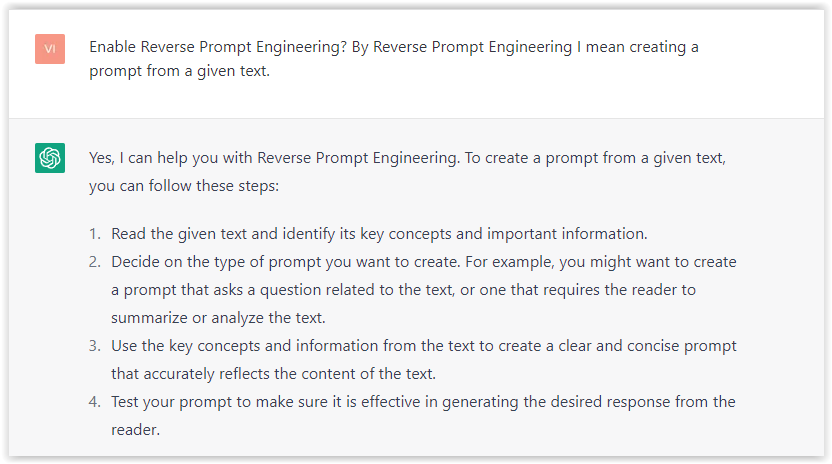 Screenshot from ChatGPT, March 2023
Screenshot from ChatGPT, March 2023You can test other GPT assistants available in the GPTs search engine if you want to use Google results.
Master Reverse Prompt Engineering
ChatGPT can be an excellent tool for reverse engineering prompts because it generates natural and engaging responses to any given input.
By analyzing the prompts generated by ChatGPT, it is possible to gain insight into the model’s underlying thought processes and decision-making strategies.
One key benefit of using ChatGPT to reverse engineer prompts is that the model is highly transparent in its decision-making.
This means that the reasoning and logic behind each response can be traced, making it easier to understand how the model arrives at its conclusions.
Once you’ve done this a few times for different types of content, you’ll gain insight into crafting more effective prompts.
Prepare Your ChatGPT For Generating Prompts
First, activate the reverse prompt engineering.
- Type the following prompt: “Enable Reverse Prompt Engineering? By Reverse Prompt Engineering I mean creating a prompt from a given text.”
 Screenshot from ChatGPT, March 2023
Screenshot from ChatGPT, March 2023ChatGPT is now ready to generate your prompt. You can test the product description in a new chatbot session and evaluate the generated prompt.
- Type: “Create a very technical reverse prompt engineering template for a product description about iPhone 11.”
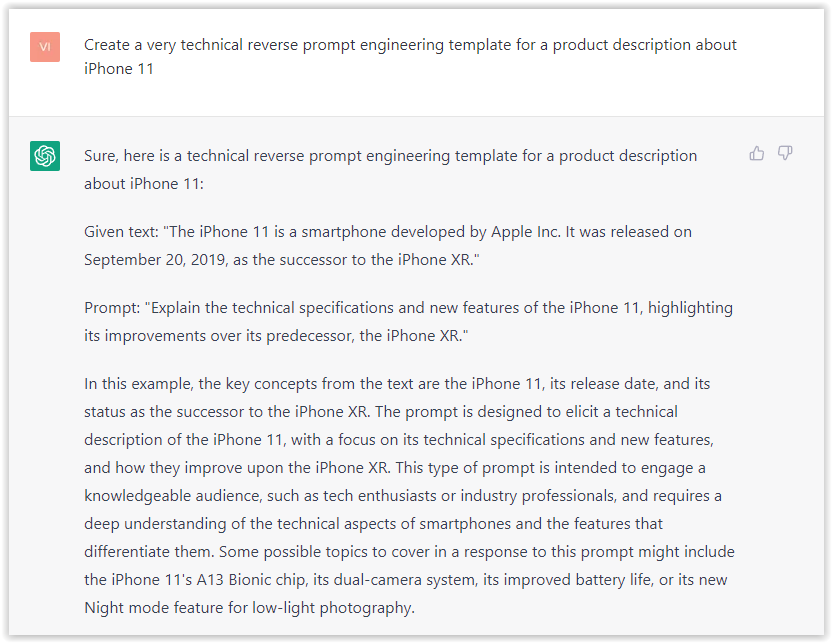 Screenshot from ChatGPT, March 2023
Screenshot from ChatGPT, March 2023The result is amazing. You can test with a full text that you want to reproduce. Here is an example of a prompt for selling a Kindle on Amazon.
- Type: “Reverse Prompt engineer the following {product), capture the writing style and the length of the text :
product =”
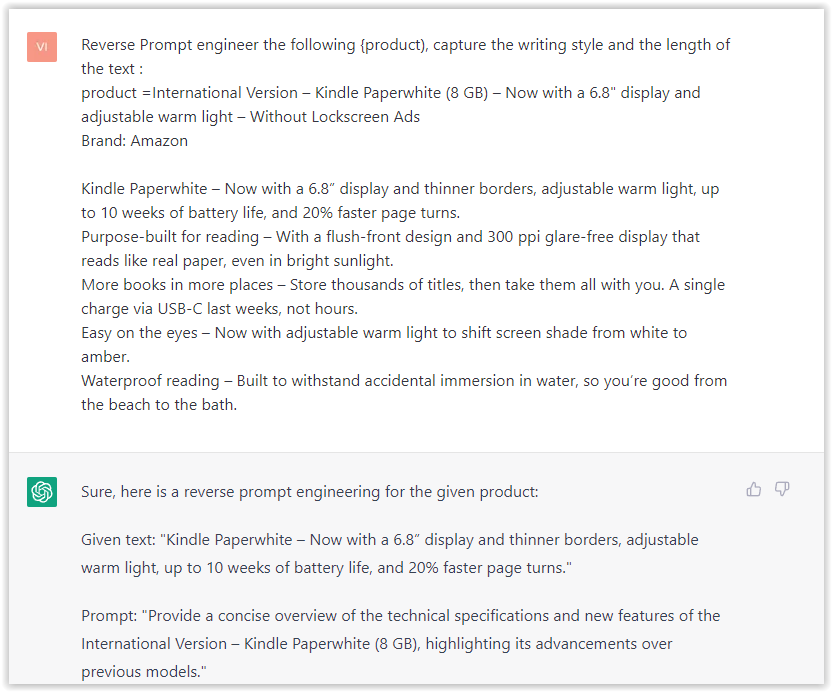 Screenshot from ChatGPT, March 2023
Screenshot from ChatGPT, March 2023I tested it on an SEJ blog post. Enjoy the analysis – it is excellent.
- Type: “Reverse Prompt engineer the following {text}, capture the tone and writing style of the {text} to include in the prompt :
text = all text coming from https://www.searchenginejournal.com/google-bard-training-data/478941/”
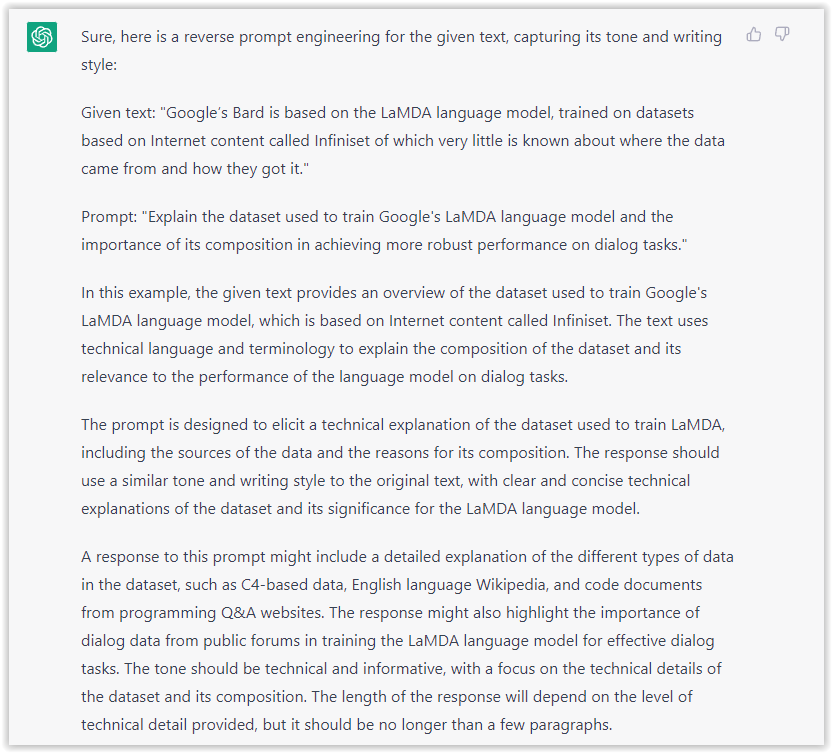 Screenshot from ChatGPT, March 2023
Screenshot from ChatGPT, March 2023But be careful not to use ChatGPT to generate your texts. It is just a personal assistant.
Go Deeper
Prompts and examples for SEO:
- Keyword research and content ideas prompt: “Provide a list of 20 long-tail keyword ideas related to ‘local SEO strategies’ along with brief content topic descriptions for each keyword.”
- Optimizing content for featured snippets prompt: “Write a 40-50 word paragraph optimized for the query ‘what is the featured snippet in Google search’ that could potentially earn the featured snippet.”
- Creating meta descriptions prompt: “Draft a compelling meta description for the following blog post title: ’10 Technical SEO Factors You Can’t Ignore in 2024′.”
Important Considerations:
- Always Fact-Check: While ChatGPT can be a helpful tool, it’s crucial to remember that it may generate inaccurate or fabricated information. Always verify any facts, statistics, or quotes generated by ChatGPT before incorporating them into your content.
- Maintain Control and Creativity: Use ChatGPT as a tool to assist your writing, not replace it. Don’t rely on it to do your thinking or create content from scratch. Your unique perspective and creativity are essential for producing high-quality, engaging content.
- Iteration is Key: Refine and revise the outputs generated by ChatGPT to ensure they align with your voice, style, and intended message.
Additional Prompts for Rewording and SEO:
– Rewrite this sentence to be more concise and impactful.
– Suggest alternative phrasing for this section to improve clarity.
– Identify opportunities to incorporate relevant internal and external links.
– Analyze the keyword density and suggest improvements for better SEO.
Remember, while ChatGPT can be a valuable tool, it’s essential to use it responsibly and maintain control over your content creation process.
Experiment And Refine Your Prompting Techniques
Writing effective prompts for ChatGPT is an essential skill for any SEO professional who wants to harness the power of AI-generated content.
Hopefully, the insights and examples shared in this article can inspire you and help guide you to crafting stronger prompts that yield high-quality content.
Remember to experiment with layering prompts, iterating on the output, and continually refining your prompting techniques.
This will help you stay ahead of the curve in the ever-changing world of SEO.
More resources:
Featured Image: Tapati Rinchumrus/Shutterstock
SEO
Measuring Content Impact Across The Customer Journey
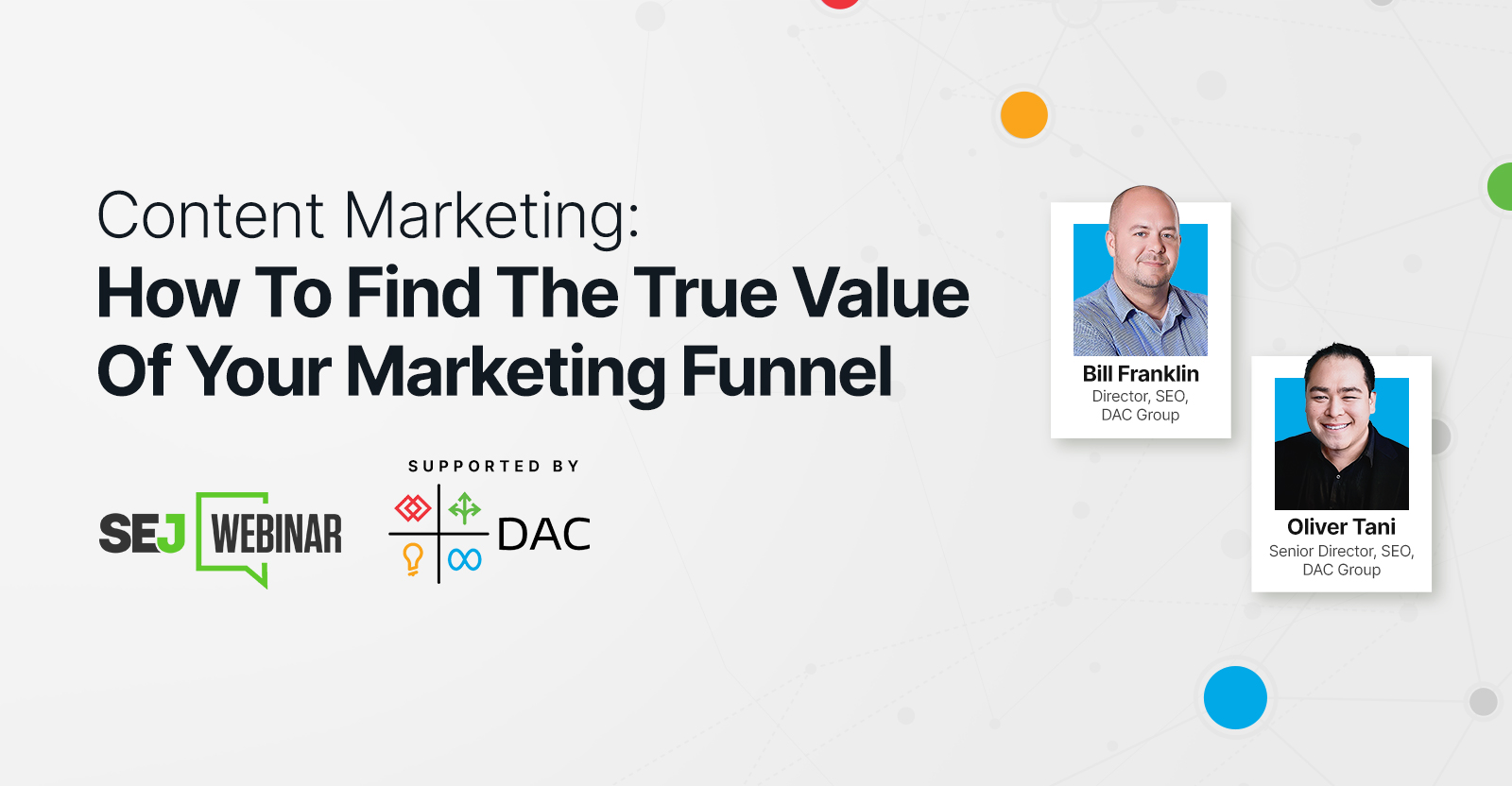
Understanding the impact of your content at every touchpoint of the customer journey is essential – but that’s easier said than done. From attracting potential leads to nurturing them into loyal customers, there are many touchpoints to look into.
So how do you identify and take advantage of these opportunities for growth?
Watch this on-demand webinar and learn a comprehensive approach for measuring the value of your content initiatives, so you can optimize resource allocation for maximum impact.
You’ll learn:
- Fresh methods for measuring your content’s impact.
- Fascinating insights using first-touch attribution, and how it differs from the usual last-touch perspective.
- Ways to persuade decision-makers to invest in more content by showcasing its value convincingly.
With Bill Franklin and Oliver Tani of DAC Group, we unravel the nuances of attribution modeling, emphasizing the significance of layering first-touch and last-touch attribution within your measurement strategy.
Check out these insights to help you craft compelling content tailored to each stage, using an approach rooted in first-hand experience to ensure your content resonates.
Whether you’re a seasoned marketer or new to content measurement, this webinar promises valuable insights and actionable tactics to elevate your SEO game and optimize your content initiatives for success.
View the slides below or check out the full webinar for all the details.
-

 PPC6 days ago
PPC6 days ago19 Best SEO Tools in 2024 (For Every Use Case)
-
SEARCHENGINES5 days ago
Daily Search Forum Recap: April 19, 2024
-

 MARKETING7 days ago
MARKETING7 days agoEcommerce evolution: Blurring the lines between B2B and B2C
-
SEARCHENGINES6 days ago
Daily Search Forum Recap: April 18, 2024
-

 WORDPRESS6 days ago
WORDPRESS6 days agoHow to Make $5000 of Passive Income Every Month in WordPress
-

 SEO7 days ago
SEO7 days ago2024 WordPress Vulnerability Report Shows Errors Sites Keep Making
-

 WORDPRESS6 days ago
WORDPRESS6 days ago10 Amazing WordPress Design Resouces – WordPress.com News
-
WORDPRESS7 days ago
[GET] The7 Website And Ecommerce Builder For WordPress


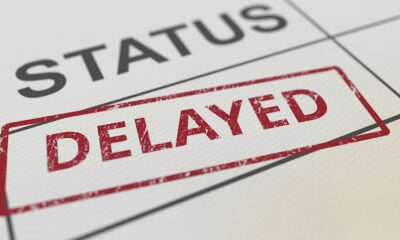









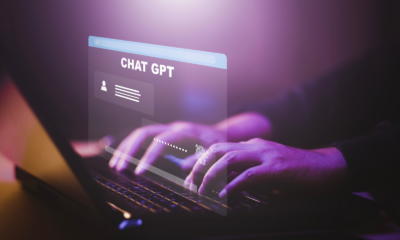



You must be logged in to post a comment Login